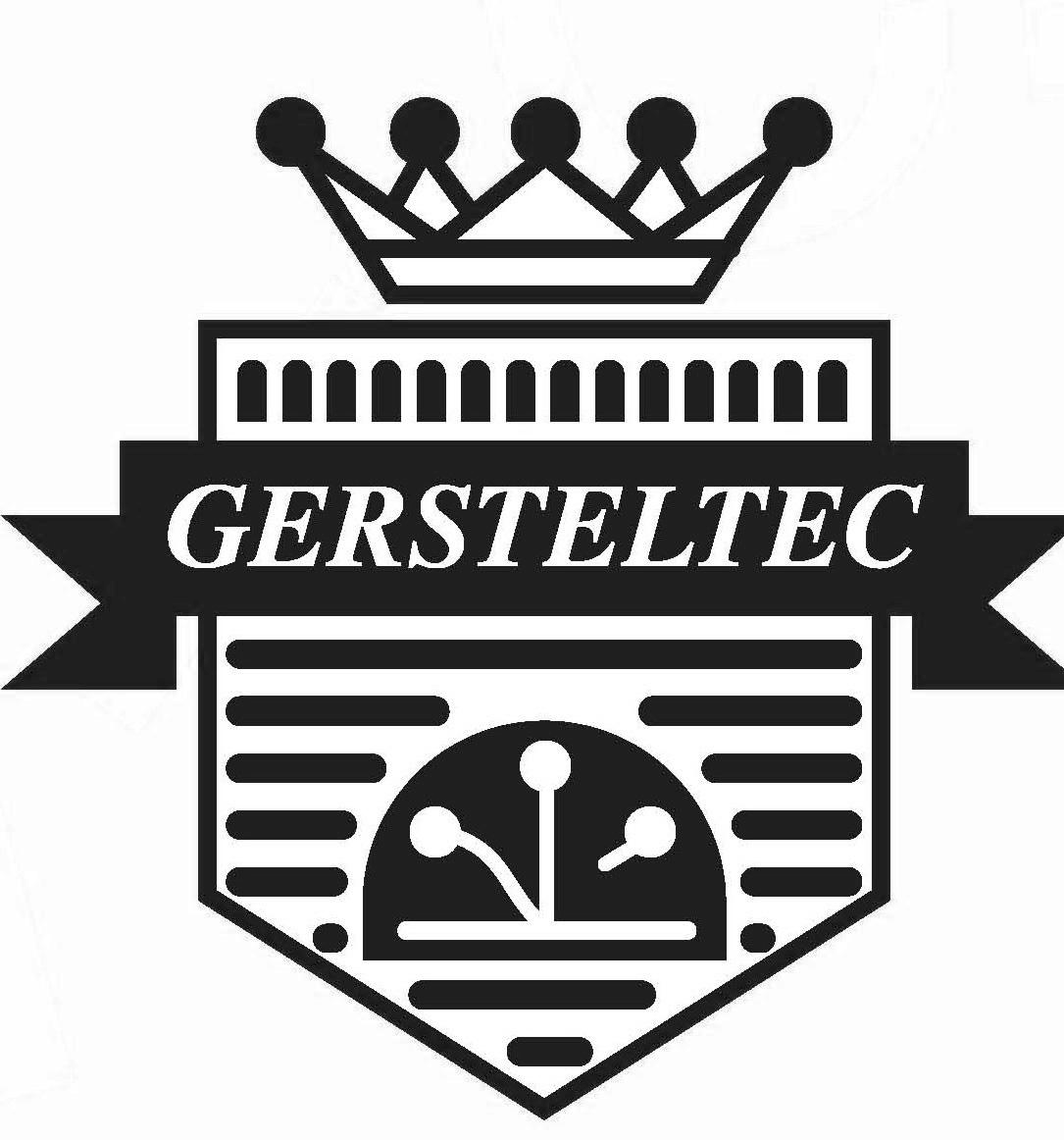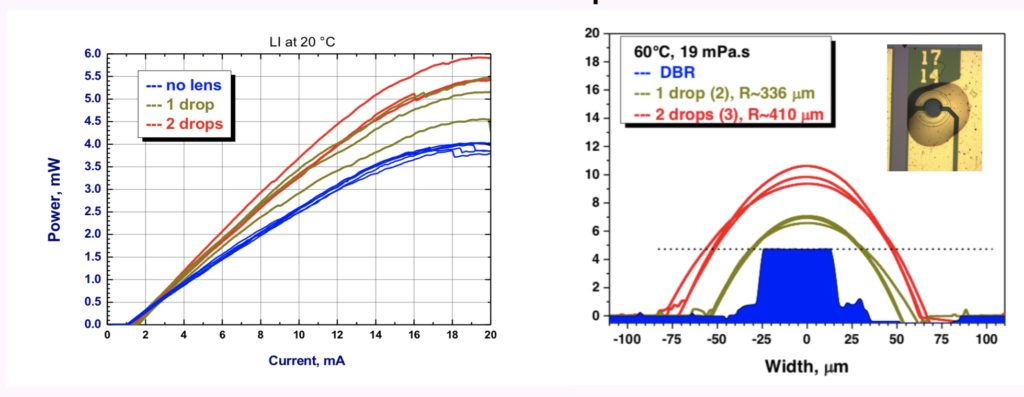Low-cost packaging of VCSELs (vertical cavity surface emitting lasers) is essential for their applications in computers, communications and sensing. We discuss the fabrication of polymer-based microlenses on VCSEL arrays for beam shaping and efficient coupling with optical fibers.
Drop–on-Demand Microfab Inkjet technique is employed to deposit SU8 lenses on GaAs substrates and on arrays of high-performance, 1310nm wavelength VCSELS. The shape of the microlenses was controlled by varying the liquid viscosity, number and volume of drops, nozzle size, and substrate temperature. We used viscosities of 10, 14, 16, 18 and 19mPa.s, temperatures of 27°c and 60°C, and nozzle diameter of 50µm. Microlense diameter d and height h varied between d=130µm and 210µm, and h=20-40µm. These parameters correspond to focal lengths of 160µm to 230µm. The smallest diameter and focal length were obtained with a viscosity of 14mPa.s. at 60°C.
The compatibility of the approach with high-performance telecommunication VCSELs was investigated by depositing the SU8 lenses on arrays of wafer-fused 1310nm VCSELs, capable of 10Gb/s modulation speed. At this stage, the VCSEL-lens distance was not optimized for optimal beam shaping. Comparing the light-versus-current characteristics before and after lens deposition revealed a significant increase in output power and external efficiency of the devices after polymer deposition on the upper Bragg mirror. An increase of the output power from 2.5mW to 3.5mW was measured, with a tolerable increase in threshold current (from 1mA to 1.5mA). We interpret this result as due to the slight decrease in upper mirror reflectivity due to the change in refractive index of the upper medium. Further work should yield optimized lenses for efficient coupling with single mode fibers.
Ellafi Dalila, Alexandru Mereuta, Benjamin Dwir, Moshe Judelewicz, Mohammadmahdi Kiaee, Jürgen Brugger and Eli Kapon.
Conferance Poster Printing Electronics Europa Berlin 2019

